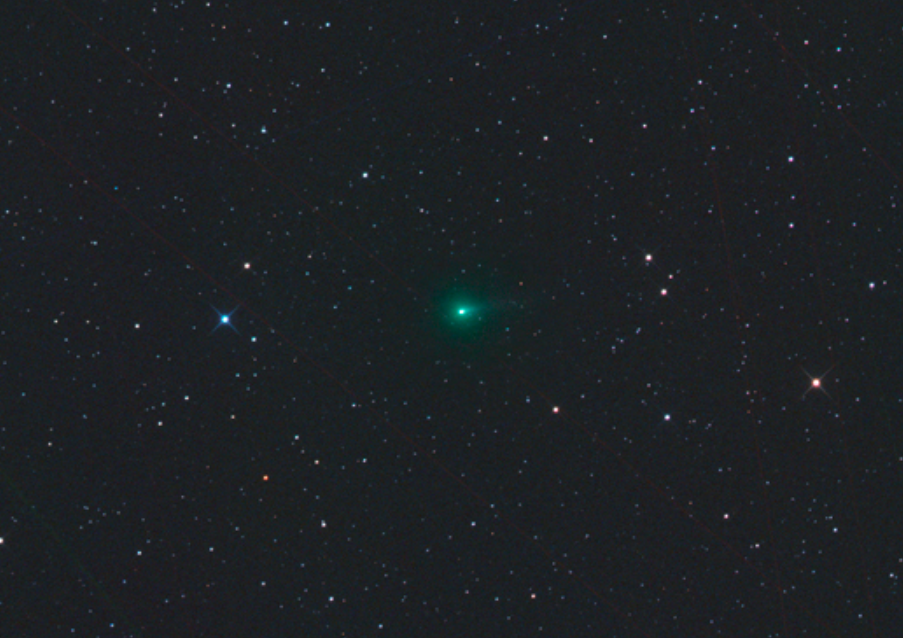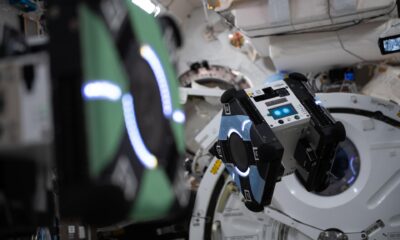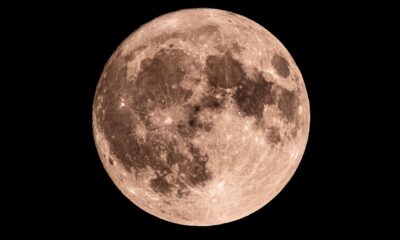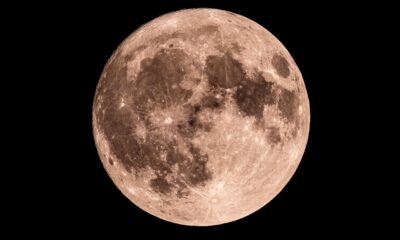Science
Interstellar Comet 3I/ATLAS Approaches Perihelion This Week

The interstellar comet 3I/ATLAS is making headlines this week as it approaches its perihelion, scheduled for October 29, 2023, at approximately 11:47 Universal Time (UT). Discovered on July 2 during the ATLAS sky survey, this comet has captivated both amateur and professional astronomers with its unique characteristics and rapid trajectory.
Despite the excitement surrounding 3I/ATLAS, some narratives circulating online may be misleading. The U.S. National Aeronautics and Space Administration (NASA) has not concealed any information about the comet; instead, the agency’s communication has been limited due to a government shutdown. Consequently, many observations have fallen to dedicated amateur astronomers who have stepped in to track this fascinating celestial body.
Scientific Observations and Characteristics
3I/ATLAS exhibits a high orbital eccentricity of over 6, which indicates that it originates from outside our solar system. This designation as an interstellar object has sparked significant interest among scientists. The comet features the typical characteristics of a comet, including a coma and a dust tail. Dr. Bryce Bolin, a research scientist at Eureka Scientific, indicated that initial observations revealed a condensed coma that showed an offset pointing towards the Sun.
As the comet approached its perihelion, it began to develop an extended anti-solar tail, a phenomenon attributed to small dust particles moving away from the Sun due to solar radiation pressure. Recent spectroscopic analysis from Gemini South has shown that the comet is turning green, a color attributed to diatomic carbon emissions, commonly known as cyanogen gas.
Further studies suggest that 3I/ATLAS likely comes from the thick disk of the Milky Way and is an ancient object, possibly predating our solar system. Currently, it is traveling at an impressive speed of 58 kilometers per second relative to the Sun, making it impossible for telescopes on Earth to capture detailed images. However, the European Space Agency (ESA) plans to observe the comet with its upcoming Jupiter Icy Moons Orbiter (JUICE), which will begin monitoring the comet from a distance in early November.
Trajectory and Visibility
As 3I/ATLAS reaches its perihelion, it will be located approximately 1.36 Astronomical Units (AU) from the Sun, and nearly opposite Earth, making it difficult for observers on our planet to see it until November. While its trajectory presents some intriguing characteristics, such as a low inclination to the ecliptic, this is not unusual for comets. Most comets have similarly low inclinations, and the fact that 3I/ATLAS is not making a particularly bright appearance is consistent with behaviors observed in other solar system comets.
On October 3, 3I/ATLAS passed within 0.19 AU of Mars, prompting heightened alertness among missions on and near the Red Planet, including NASA’s rovers and ESA’s Martian orbiters. Observations revealed the comet appearing like a cylinder in some images, reminiscent of Arthur C. Clarke’s fictional objects.
Despite the occasional sensationalism surrounding the comet, there is no credible evidence to suggest any extraordinary explanations for its presence. While speculation about 3I/ATLAS being an artificial object or part of an alien fleet has emerged, the scientific community largely views it as a typical interstellar comet, albeit with a fascinating origin story.
As November unfolds, there will be increased opportunities for amateur astronomers to observe 3I/ATLAS as it reemerges from behind the Sun. Although it is expected to remain faint, with a predicted brightness around 11th magnitude, it should be visible with larger backyard telescopes as it traverses the constellations of Virgo and Leo.
Looking ahead to 2026, 3I/ATLAS will exit the solar system in the direction of the constellation Gemini, continuing its journey through the depths of interstellar space. This comet marks only the third confirmed interstellar comet observed in our solar system, following 1I/Oumuamua in 2017 and 2I/Borisov in 2019.
The ongoing advancements in astronomical technology, including the upcoming Vera C. Rubin telescope, are expected to enhance our ability to detect fainter interstellar objects in the future. The excitement surrounding 3I/ATLAS demonstrates the allure of these rare visitors, reminding us of the vast wonders beyond our solar system. As Dr. Bolin aptly remarks, the scientific facts surrounding 3I/ATLAS are indeed captivating enough without needing to delve into speculative fiction.
-

 Technology5 months ago
Technology5 months agoDiscover the Top 10 Calorie Counting Apps of 2025
-

 Technology3 weeks ago
Technology3 weeks agoOpenAI to Implement Age Verification for ChatGPT by December 2025
-

 Health3 months ago
Health3 months agoBella Hadid Shares Health Update After Treatment for Lyme Disease
-

 Health4 months ago
Health4 months agoAnalysts Project Stronger Growth for Apple’s iPhone 17 Lineup
-

 Health4 months ago
Health4 months agoErin Bates Shares Recovery Update Following Sepsis Complications
-

 Technology5 months ago
Technology5 months agoDiscover How to Reverse Image Search Using ChatGPT Effortlessly
-

 Technology3 months ago
Technology3 months agoElectric Moto Influencer Surronster Arrested in Tijuana
-

 Technology5 months ago
Technology5 months agoMeta Initiates $60B AI Data Center Expansion, Starting in Ohio
-

 Technology2 months ago
Technology2 months agoDiscover 2025’s Top GPUs for Exceptional 4K Gaming Performance
-

 Technology5 months ago
Technology5 months agoRecovering a Suspended TikTok Account: A Step-by-Step Guide
-

 Health5 months ago
Health5 months agoTested: Rab Firewall Mountain Jacket Survives Harsh Conditions
-

 Lifestyle5 months ago
Lifestyle5 months agoBelton Family Reunites After Daughter Survives Hill Country Floods




















